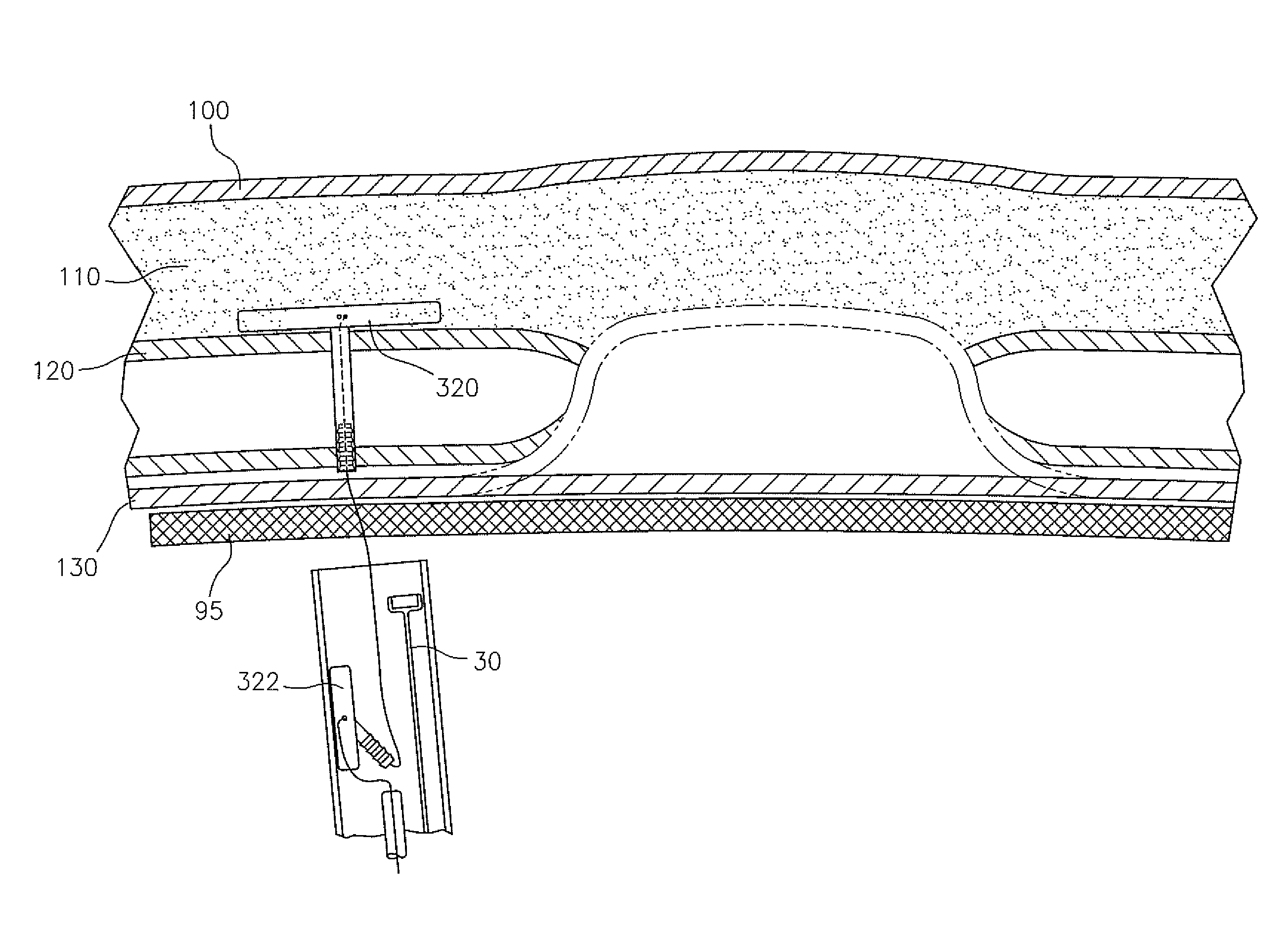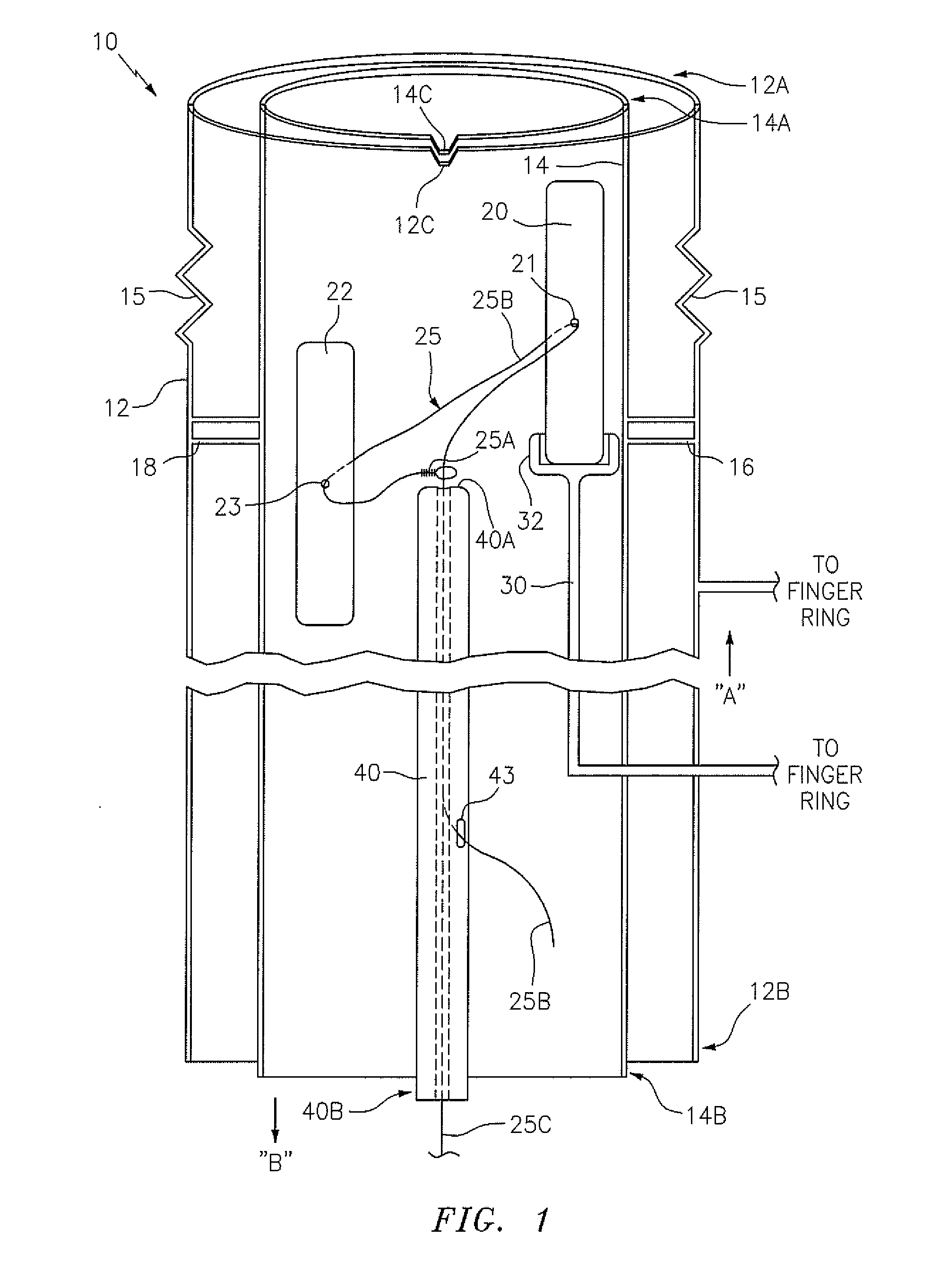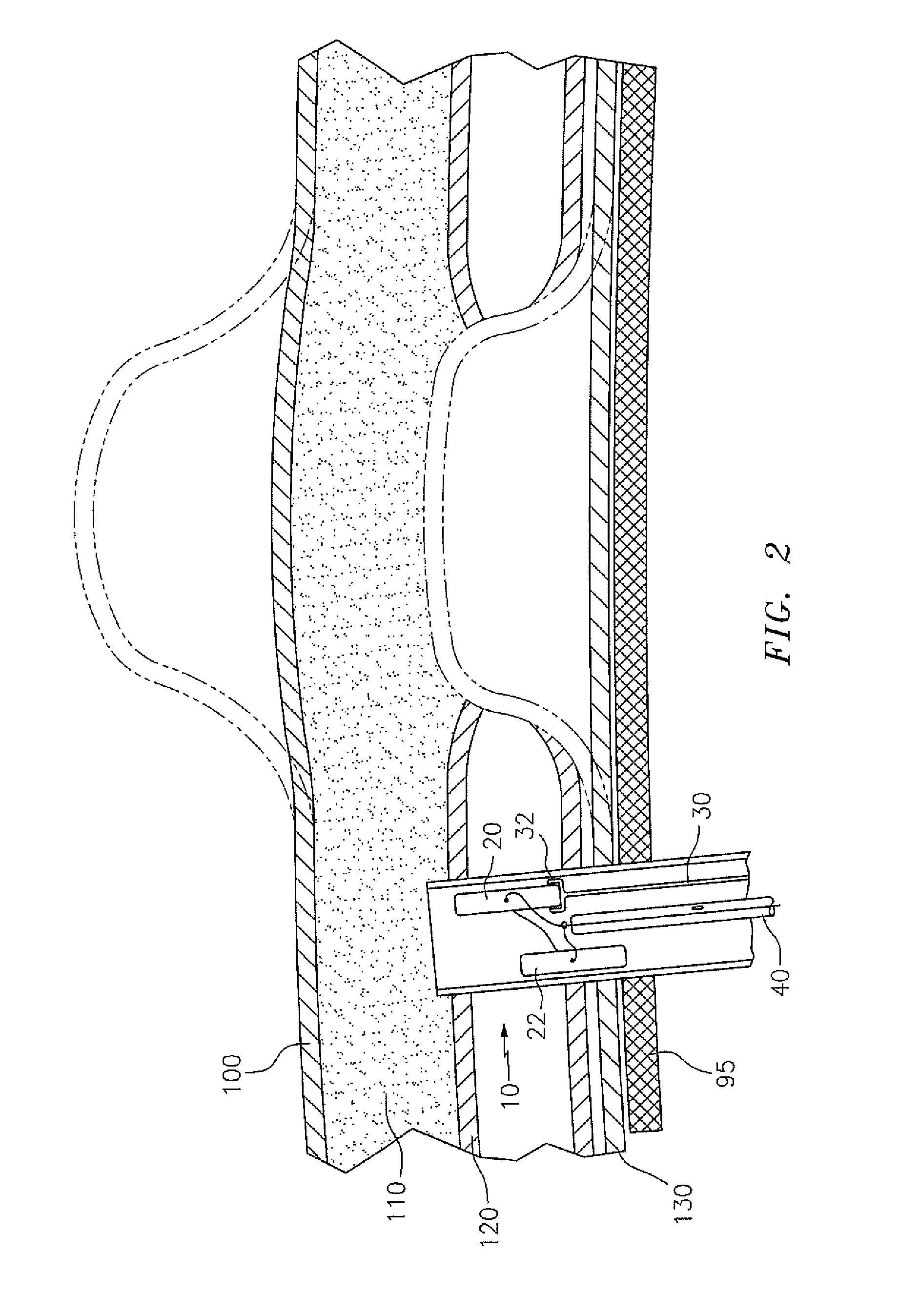Assemblies and Methodologies for Internal Transfascial Mesh Fixation
a technology of mesh and assembly method, applied in the field of instruments, can solve the problems of non-reducible hernia, visible bulge under the skin, pain, etc., and achieve the effect of facilitating the ability of basic laparoscopic surgeons and fewer complications
- Summary
- Abstract
- Description
- Claims
- Application Information
AI Technical Summary
Benefits of technology
Problems solved by technology
Method used
Image
Examples
first embodiment
[0063]In this first embodiment, assembly 10 also comprises a first holding member 20, which is at least partially positionable in the elongated shaft 14. Preferably, first holding member 20 is positionable completely in shaft 14, but it is contemplated that portion of first holding member 20 may extend outward from front end 14A of shaft 14 as insertion into the abdominal wall is proceeding. For example, in such an embodiment, it is the first holding member 20 that extends partially out of the front end 14A and itself has a cutting edge for piercing through the peritoneum and fascia layers of the abdominal wall. This optional configuration is applicable for all first holding members disclosed herein.
[0064]Assembly 10 also comprises a second holding member 22, which similarly, is at least partially (and most preferably, completely) positionable in the outer elongated shaft 14. In the embodiment of FIG. 1, and prior to their urging or deployment out of shaft 14 as will be discussed be...
second embodiment
[0112]In accordance with a second preferred methodology using the assembly as disclosed in the second embodiment, the preferred steps comprise inserting the first end of the outer elongated shaft through the mesh layer and through at least the peritoneum layer and the fascia layer of the abdominal wall; deploying the first holding member out the first end of the outer elongated shaft and into a region of the abdominal wall intermediate a skin layer and a fascia layer; pulling the outer elongated shaft out of the abdominal wall; exiting the second holding member out the first end of the outer elongated shaft; applying a tension on the intermediate portion of the first coupler to pull the first holding member and the second holding member towards each other; and locking the locking arrangement about the intermediate portion of the first coupler; whereby a mesh patch that is positioned against the peritoneum layer is secured thereagainst by the second holding member while the first hol...
third embodiment
[0113]In yet another embodiment using the assembly as disclosed in FIG. 12, the method comprises the steps of inserting the first end of the outer elongated shaft through the mesh layer and through at least the peritoneum layer and the fascia layer of the abdominal wall; deploying the first holding member out the first end of the outer elongated shaft and into a region of the abdominal wall intermediate a skin layer and a fascia layer; pulling the outer elongated shaft out of the abdominal wall; exiting the second holding member out the first end of the outer elongated shaft; inserting the male section into the female section so that the first holding member and the second holding member are in interlocked engagement with each other; whereby a mesh patch that is positioned against the peritoneum layer is secured thereagainst by the second holding member while the first holding member is retained against the fascia layer of the abdominal wall.
[0114]It should however also be clear to ...
PUM
 Login to View More
Login to View More Abstract
Description
Claims
Application Information
 Login to View More
Login to View More - Generate Ideas
- Intellectual Property
- Life Sciences
- Materials
- Tech Scout
- Unparalleled Data Quality
- Higher Quality Content
- 60% Fewer Hallucinations
Browse by: Latest US Patents, China's latest patents, Technical Efficacy Thesaurus, Application Domain, Technology Topic, Popular Technical Reports.
© 2025 PatSnap. All rights reserved.Legal|Privacy policy|Modern Slavery Act Transparency Statement|Sitemap|About US| Contact US: help@patsnap.com



